by Trevor Jackson
There’s a genuine steamships’ telegraph in my loungeroom. Salvaged from the depths. It’s in pretty good condition considering the time it spent underwater. Its bells still ring, and on the faceplate, it reads : Full Ahead, Half Ahead, Dead Slow, Finished with Engines. Inside; a series of chains and cogs once connected it from a wheelhouse, to an engine room. An identical telegraph in each room, enabled the captain and the engineer to ‘speak’ to each other. That’s how it was done in the golden age of steam. Famous ships like Titanic and Bismarck had them. Closer to home, Captain William Knight, master of the SS Yongala, now the world’s most fabulous wreck dive, had one beside him. It was the evening of March 23, 1911. (See Figure 1.)
Figure 1. Cyclone Tracking Map of Yongala Wreck.
18:00: Full Ahead: Captain Knight could see the Whitsunday Passage begin to open up before him to the north. A brisk breeze from the south west wasn’t concerning him too much. If he had seen the warning flags when he left Mackay earlier, he might have done the prudent thing and anchored up. But he hadn’t seen them. The Dent Island lighthouse keeper watched the ship pass by at dusk. All seemed fine. Yongala steamed north at ‘Full Ahead’.
22:00: Half Ahead: Well before midnight, the weather took a dramatic turn.
A full gale from the south east kicked off. With the Whitsundays now well behind them, the developing gales ran rampant in the open sea space. Waves were mounting up to the east of Cape Upstart. By 22:00, Captain Knight was faced with the proverbial ‘rock/hard place’ decision. To his port, mainland Australia. To starboard, the coral. He couldn’t turn either way. His only option was to just run with it, but the further north he got, the greater the fetch behind him. The waves just kept getting bigger. Yongala was a fast ship. With a gale behind her she may have been doing close to 20 knots.
To steady the ship, and to keep her steering straight without actually surfing, Knight signals, ‘Half Ahead’.
23:30: Slow Ahead: Near the centre of a cyclone, you can attest to two things… mind numbing wind, and zero visibility. The poor visibility is caused by rain, and the rain would become Yongala’s nemesis. With the ship now struggling to keep straight, Captain Knight noticed a lagging in steam pressure. His fires were dying. Ordinarily, no amount of rain down the funnels would have any effect, but Yongala was now in the grim clutches of the cyclone…Niagara falls were cascading straight down the funnels. The fires went out…No fire, no steam, no forward motion….I like to think Captain Knight, in a fruitless gesture to give the engineers time to escape the ships’ bowels, tried to utilise the very last of his dwindling steam. The telegraph bell rang for ‘Slow Ahead’.
00:00: Finished with Engines: In a few minutes, Yongala would turn side on to the wind. Her fate was sealed. The next big set and she’d be gone. The ship and 122 souls, condemned to the dark depths. Silenced forever. Knight would have been on the bridge up until the waves swept him away. Perhaps in a final act of command, his knarred fingers shunted that telegraph handle one more notch, and a final bell, rang out that night, ‘Finished with Engines’.
Dive back in time and into history.
7 Night Yongala and Coral Sea Expeditions February | March | April 2023/24
David Robinson – Yongala Wreck – Mike Ball Photo of the Year Competition Winner 2021/22
The post Finished with Engines appeared first on Mike Ball Dive Expeditions.
Read More Go to Mike Ball Archive Mike Ball Dive Expeditions
